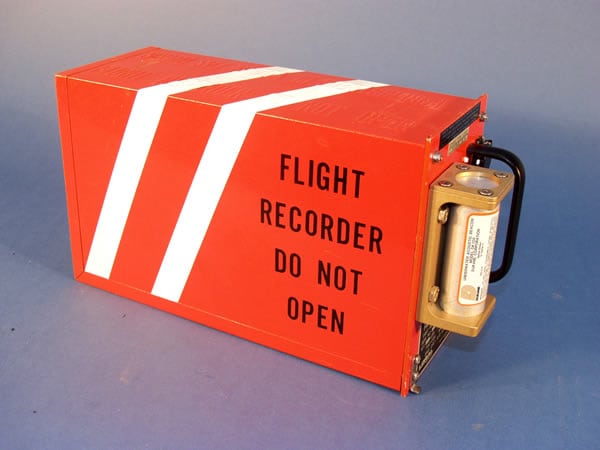 |
| Cockpit voice recorder. Photo: National Transportation Safety Board |
[Avionics Magazine 09-21-2016] The European Aviation Safety Agency (EASA) has released new regulations that call for the “extension of the minimum transmission times” for Cockpit Voice Recorders (CVRs), Underwater Locating Devices (ULDs) and aircraft localization.
1) Cockpit voice recorder:
• All 30-minutes recording duration CVRs installed on airplanes must be replaced by two hours recording duration CVRs by January 2019
• All CVRs installed on airplanes and helicopters and recording on magnetic tape must be replaced by solid-state CVRs by January 2019
• Airplanes with a Maximum Certified Take-Off Mass (MCTOM) of more than 27,000 kg and manufactured as of January 2021 the minimum CVR recording duration must be 25 hours.
2) Underwater locating devices:
• Flight recorders ULDs: must be capable of transmitting at least 90 days by July 2018, instead of 30 days;
• Airplanes with a MCTOM of more than 27,000 kg and more than 19 PAX and cargo airplanes with a MCTOM exceeding 45,500 kg performing transoceanic flights must be retrofitted by January 2019 with an additional long-range ULD with a very large detection range.
3) Aircraft localization:
• Operators of airplanes with a MCTOM of more than 27,000 kg and 19 passengers and cargo airplanes with a MCTOM of more than 45,500 kg must put in place an aircraft tracking system for those flights not tracked by Air Traffic Control (ATC), by December 2018;
• Airplanes with a MCTOM of more than 27,000 kg and 19 passengers and cargo airplanes with a MCTOM of more than 45,500 kg, and manufactured as of January 2021 must be fitted with robust and automatic means to determine the location of an accident.